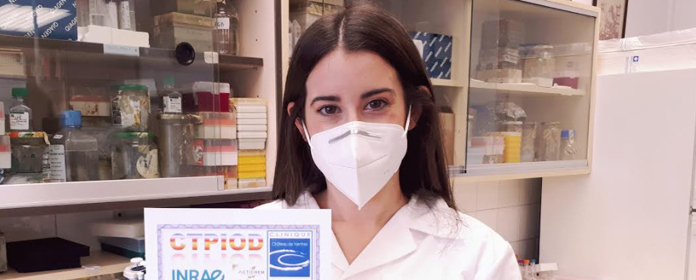New genetic variants and gene identified that increase the risk of developing Alzheimer's disease
Carlos Cruchaga, former student of the University of Navarra, leads the international team of researchers who have authored the finding
An international team of scientists, led by Carlos Cruchaga, researcher of Washington University in St. Louis and double graduate in Biology and Biochemistry of the University of Navarra, has identified several mutations in a new gene that double the risk of developing Alzheimer's disease. The study describing these results has been published in the prestigious journal Nature.
Several groups collaborated in this international study, including that of Dr. Pau Pastor, from the laboratory of Neurogenetics of the research center Médica Aplicada (CIMA) and consultant of the department of Neurology of the University of Barcelona. Clínica Universidad de Navarra.
Over the past two decades, several programs of study have identified common genetic variants that increase the risk of developing Alzheimer's in some cases.
The newly identified genetic variants have been found in a gene that has never been linked to Alzheimer's disease before, and they appear in the population at a very high frequency leave, which makes them very difficult to identify. However, these subject variants are important because people who carry them have a much higher risk of developing the disease. In addition, these programs of study are able to identify new genes involved in Alzheimer's disease and to provide new clues to the biological processes involved in the disease.
In this study the researchers used an innovative and powerful experimental design , which is expected to be adopted by other research groups in the future to identify new genes involved not only in Alzheimer's disease, but also in other neurodegenerative diseases and other complex diseases such as diabetes. This experimental design is based on the initial study of families with several members with the disease.
A study based on the DNA of more than 15,000 people.
Dr. Cruchaga and his collaborators used the latest DNA sequencing technologies to study all the genes in the genome of several patients and families with several cases of Alzheimer's. "The first step of the study was to identify families with mutations in genes known to cause Alzheimer's, and to eliminate those families from the study," explains Dr. Cruchaga."The first step of the study was to identify families with mutations in genes known to cause Alzheimer's, and eliminate those families from the study," explains Dr. Cruchaga. "In this way we focused on families that did not have any mutations in the known Alzheimer's genes."
In total, the researchers sequenced all the genes of several relatives with and without Alzheimer's disease in more than 14 families, using a technique called whole exome sequencing. The scientists compared the DNA of the Alzheimer's patients with the DNA of relatives without the disease. In the end, they identified two families that carried the same variant Genetics in the phospholipase D3 (PLD3) gene, and that variant was present only in the relatives with the disease.
"The next step was to study the DNA of more than 11,000 people with and without the disease, and we found that the variant in the PLD3 gene doubles the risk of developing Alzheimer's," says the University of Navarra's graduate , a professor in neurogenetics at Washington University in St. Louis. "This variant Genetics in PLD3, as well as the variant identified in TREM2, at programs of study above, increases the risk of Alzheimer's more than any other variant identified by the genome-wide common variant programs of study ."
Once it was confirmed that this variant increased the risk of Alzheimer's disease, they studied the entire sequence of the PLD3 gene in another 4,000 people with the disease and in healthy subjects. This experiment was crucial to identify other variants that also increase the risk of Alzheimer's, confirming the importance of the PLD3 gene in the disease.
"The experimental design used in this study to identify PLD3, is as important as the identification of the gene," comments Alison M. Goate, Ph.D., department Professor of Psychiatry Genetics at Washington University in St. Louis and a collaborator on the study.
This finding points to new biological pathways for Alzheimer's disease.
Additional experiments performed at laboratory demonstrated that amyloid beta protein levels are inversely correlated with PLD3 levels. Amyloid beta protein is a major protein that accumulates in the brains of Alzheimer's patients. When the researchers reduced PLD3 expression in cellular models of the disease, amyloid beta protein levels increased.
"This experiment clearly suggests that PLD3 modifies the risk of developing Alzheimer's disease by modifying the metabolic pathways that produce beta-amyloid," Dr. Goate says. However, the researchers have not yet determined the specific mechanism by which PLD3 affects beta-amyloid levels and Alzheimer's risk. "Now that this gene has been identified, we need to understand what the function of this gene is, as well as the mechanism by which these rare variants in PLD3 increase the risk of Alzheimer's disease," she concludes.
position Funding for work was provided by theNational Institute on Aging (NIA), theAlzheimer's Association and the Barnes-Jewish Foundation, as well as by the American Federation for Aging Research, theBrightFocus Foundation, the Fundacion para la research Médica Aplicada (FIMA) and the Government of Navarra.





